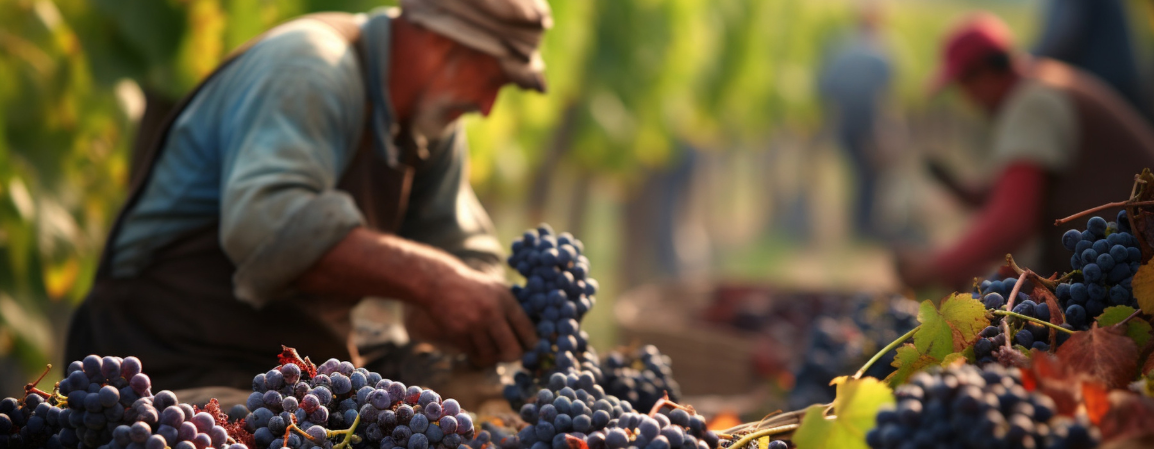One such innovation that is gaining momentum in the wine industry is the integration of Internet of Things (IoT) technology into vineyard management practices. The Internet of Things is a disruptive concept, which uses IoT-enabled sensors to manage the overall wine production in vineyards. These devices help monitor and manage productivity, thus improving process efficiency through data-driven approaches. This transformative approach promises to revolutionize how winegrowers monitor, manage, and optimize their vineyards, ultimately leading to improved grape quality, increased yields, and enhanced sustainability.
Understanding IoT in Vineyards
In the context of vineyards, IoT devices gather environmental data such as temperature, humidity, soil moisture, and more, providing winegrowers with valuable insights into their vineyard's conditions.
IoT technology in vineyards typically comprises wireless sensors deployed throughout the vineyard, along with software platforms for data processing and analysis. These sensors collect real-time data on micro-climatic conditions, soil health, and plant physiology, which are then processed and presented to winegrowers in a user-friendly format. This combination of hardware and software enables winegrowers to make informed decisions about vineyard management practices, from irrigation and fertilization to pest control and harvest timing.
Strategic Benefits of IoT in Vineyards
The implementation of IoT technology in vineyards offers a multitude of benefits that can revolutionize winemaking practices and enhance vineyard productivity and sustainability:
- Precision Farming: IoT enables winegrowers to practice precision viticulture by providing real-time insights into vineyard conditions. By monitoring factors such as soil moisture, temperature, and humidity, winegrowers can optimize irrigation and fertilization practices, resulting in healthier vines and higher-quality grapes.
- Pest and Disease Management: One of the most significant challenges faced by winegrowers is the prevention and management of pests and diseases. IoT technology allows for early detection of pest infestations and disease outbreaks through continuous monitoring of environmental conditions. By leveraging predictive analytics, winegrowers can take proactive measures to mitigate risks and minimize the need for chemical interventions, thereby reducing costs and environmental impact.
- Remote Crop Management: With IoT, winegrowers can remotely monitor and manage vineyard operations from anywhere, at any time. By accessing real-time data on vineyard conditions, soil moisture levels, and weather forecasts, winegrowers can make informed decisions about irrigation scheduling, pest control, and harvest timing without the need for physical presence in the vineyard.
- Cost Savings: IoT technology offers significant cost-saving opportunities for winegrowers. By optimizing resource usage, such as water, fertilizers, and pesticides, winegrowers can reduce production costs by 20-30%. Additionally, precision irrigation systems enabled by IoT can save up to 50% of water usage, further enhancing cost-effectiveness and sustainability.
- Environmental Sustainability: By minimizing resource usage and reducing reliance on chemical inputs, IoT promotes environmentally sustainable vineyard management practices. By adopting IoT technology, winegrowers can minimize their environmental footprint while producing high-quality grapes and wines that meet consumer demand for sustainability.
Challenges and Considerations
While IoT has lots of benefits, there are also some challenges to consider. Things like technical issues and internet connectivity can be tricky, but with the right tools and know-how, winegrowers can overcome these obstacles and make the most of IoT in their vineyards.
- Technical Knowledge: Many winegrowers may lack the technical expertise required to implement and utilize IoT technology effectively. User-friendly platforms and training programs can help bridge this knowledge gap and empower winegrowers to harness the full potential of IoT in their vineyards.
- Internet Connectivity: Poor internet connectivity in rural areas can hinder the adoption of IoT technology. However, emerging technologies like LoRaWAN offer alternative connectivity solutions suitable for vineyard environments, enabling winegrowers to overcome connectivity challenges and leverage IoT technology effectively.
- Cost of Investment: The initial investment required to implement IoT technology in vineyards may be perceived as a barrier for some winegrowers. However, cost-effective solutions are available, and calculating the potential return on investment can help justify the upfront costs, demonstrating the long-term value of IoT in vineyard management.
By implementing IoT, winegrowers can move towards precision viticulture, where decisions are driven by data and tailored to the specific needs of each vineyard. With IoT technology, the future of winemaking is ripe with possibilities, promising a new era of innovation, sustainability, and excellence in vineyard management and wine production.


